2017 saw an incredible amount of new plus-size brands and boutiques launch (check out Alysse’s 2017 roundup here), but, as I’ve made more plus-size friends and watched conversations happen on Facebook and Instagram – a growing discontent has emerged in the plus-size community. A disconnect from 10-24, and higher than a size 24. Why are Plus-Size Brands Stopping at a Size 24?
Suma Jane Dark
I first noticed it online in private Facebook groups for plus-size people, where people across the country (and the world) shared stories about not being able to find plus-size clothing in their size. And it wasn’t until I became good friends with plus-size photographer and blogger, Suma Jane Dark, that I learned what a problem it is.
https://www.instagram.com/p/BaF0d_VHbeT/?taken-by=sumajanedark
“It’s really frustrating,” she told me, “because I grew up pouring over every page of Vogue, but I couldn’t find stylish clothes in my size, honestly anything larger than a size 24 was non-existent. It’s gotten better the last few years, but it really sucks to find ‘plus-size’ brands I love that don’t include me.”
After this talk with Suma, it was like this topic turned up everywhere for me (like a plus-size instance of the Baader Meinhof Phenomenon).
I’m a size 18/20, but I started to look critically at a brand’s size chart, seeing how “inclusive” established and new plus-size brands really are.
And, even if a brand did carry up to a size 26 (ASOS) or size 30 (Premme, Eloquii and GwynnieBe), that didn’t always mean that people had access to clothes in those sizes.
Mustang Sally Two
Lisa, a plus-size blogger over at Mustang Sally Two, explained the issue of access:
“Extended sizes are still second class citizens for brands that do carry them.
I can barely shop in an actual store.
I can’t really shop in store at Torrid because they barely offer a 5 in store and don’t offer a 28 or 30.
But why don’t those over a size 22 or size 24 and up deserve that in-store shopping experience?”
https://www.instagram.com/p/BdBGMlhlp3R/?taken-by=mustangsallytwo
So, the TCF team started investigating, asking questions like: Why do brands stop at a size 24? What challenges do brands have to overcome to expand their size range? What brands are showing models past a size 24?
The answers will make you mad, roll your eyes and may inspire you to angry tweet. Use #TCFstyle to share your thoughts on plus-size brands excluding plus-size shoppers.
Problem #1: Manufacturing and Patternmaking
Before getting into the social or economic reasoning behind stopping at a size 24, we need to start where the clothes do. Namely, the design and manufacturing process.
A lot of designers just don’t know how to design for plus-size bodies, because they aren’t taught how to do so.
Did you also want to chuck their remote at their screen while watching the most recent season of Project Runway?
Liris is a GODDESS, and it was so frustrating when designers didn’t know how to dress her.
https://www.instagram.com/p/Ba468XmHJuO/?taken-by=lirisc
Dominique talked about this more in her article on teaching how to design fashion for plus-size bodies.
Bottom line: Fashion instructors don’t know how to do it, so they don’t teach it, so the clothes just don’t get made.
“Instructors Don’t Know How to Do Or Teach Designing Plus Size Bodies”
But, there are pattern makers and designers out there who do design for plus-size bodies.
Rachel Kacenjar, plus-size designer and patternmaker, had a lot of thoughts to share on plus-size pattern making:
“Plus size fit is hard.
There, I said it.
We all hold our weight differently, and where there might be 1-3 body types that will wear a size 14, there are more like 4-6 body types that will wear a size 30.
Our bodies are beautifully complex.”
And, even when a brand does have best intentions at heart and wants to be inclusive, there are still challenges.
Alexis Krase, owner of Plus Bklyn added, “Finding a manufacturer who is willing to work with us to make our Spring 2018 line has been so hard. Oftentimes, I don’t get a direct ‘No, we can’t do that’ but am told so many excuses that it may as well be a no.”
Solution
Manufacturing resource websites like MakersRow should include information on whether a manufacturer has the capability and/or will produce plus-size clothing, and include a resource list on plus-size patternmakers.
Problem #2: “Plus-Size Women Don’t Buy Clothes” or Disposable Income & Perceptions of It
Being a plus-size person, doesn’t come without its share of discrimination, as writer Roxane Gay recently pointed out on her twitter, calling out the Midwest Writers Conference for refusing to give Sarah Hollowell a place on their Organizational Committee because of her size.
https://twitter.com/rgay/status/950875948848635904
And, while this ticks us all off, it’s not technically illegal, as @YrFatFriend pointed out.
https://twitter.com/yrfatfriend/status/950982932780367872
Thanks to a toxic cocktail of hiring discrimination and being given less opportunities, it is easy to extrapolate to the idea that people who are larger than a size 24 make less money, and therefore buy less clothing.
This seems to be an often cited reason when talking with people in the fashion industry, but, obviously, no one wants to go on record saying that. “In my personal experience, I have been told by brands that the larger sizes don’t sell, which makes other brands afraid to expand their price range,” says blogger Marcy Cruz.
https://www.instagram.com/p/BVsYRfglIQ4/?taken-by=fearlesslyjustme
This extrapolation is dangerous and discriminatory.
If 67% of women in the United States are over a size 14, then a good percentage of women are over a size 24.
While fashion won’t solve income inequality, it is hard to to imagine a size 24 woman will do well in a job interview or in a classroom if she can’t find clothing to wear to these places.
A lack of options can be incredibly isolating.
Corissa Enneking, blogger behind Fat Girl Flow, who is a size 26/28 had this to say about brands selling larger sizes:
“I get questions on a daily basis from people over a size 24 who are looking for clothing stores that carry their size.
People in this size-range are used to having zero options – so why look at new product drops?
Brands have to do a lot of outreach so that these customers know they can shop there.”
Limited Size Runs
And, part of the problem is the limited size runs that brands do.
It’s hard to sell clothes above a size 24 if you don’t have them in stock!
Remember Lisa of MustangSallly2? “I personally am shocked to hear that larger sizes don’t sell online because everything I want is gone fast. If I want a 28 jean from Penningtons I need to be on it right away as soon as they are released in August for example.”
One really only has to look at the recent rise of plus-size model Saucye West to see that people over a size 24 have been excluded, and are ready for representation.
https://www.instagram.com/p/BXGHu5gAHS2/?taken-by=saucyewest
Proposed Solution
Stop being so damn classist, brands.
Ask yourselves, “Are women not buying clothes beyond a size 24 because they can’t, or is it because they don’t know what it will look like on them?”
More on that next.
Problem #3: Representation & Casting Models
“Seeing a model who is probably like a US 12 isn’t helpful to me,” says Bea Alexandra, who is an activist, model and plus-size blogger. “Why would I buy something if I don’t know what it looks like on my body?”
Eloquii and Gwynniee Bee have recently announced that they’ll go up to a size 30 on their websites. But when you look at their websites, it’s a lot of models who are a size 14 who have an “hourglass shape.”
Plus-size staple brands, Lane Bryant and Torrid, also seem to have this problem.
How are people supposed to buy from brands (with new extended sizing!) if the models don’t show the clothes?
“I find a lot of Plus Bklyn models through social media,” says Alexis Krase.
“I get so much positive feedback from customers who are excited to see someone modeling a piece who looks like them.
We make it a point to cast diverse models, all of whom aren’t signed, because agencies aren’t signing anyone over a 14.”
Premme cast both a signed model (Anastasia Furrow) to model their size 2, and influencer Natalie Drue to model a 3 (the brand goes up to what they call a “6,” or a size 30). For their latest drop, co-founder Gabi Gregg took to twitter to ask agencies to cast models beyond a size 14/16.
https://twitter.com/gabifresh/status/939022010973220864
Gabi is also taking it one step FURTHER and holding an open casting call in LA for her latest collab with Swimsuits for All. If you can’t find them, cast them!
Proposed Solution
Large retailers like Eloquii, Lane Bryant, Torrid can lead the way by requesting plus-size models who are larger than a size 16.
This will then lead to smaller startup and indie brands being able to hire these models. And, in the meantime, brands shouldn’t hide behind the “there are no models to cast!” excuse.
Follow Plus Bklyn and Gabi Gregg’s lead, and cast the people who are reflective of your customer.
What do you think? We want to hear from you and if you have a friend who has been vocal, share this with them too!

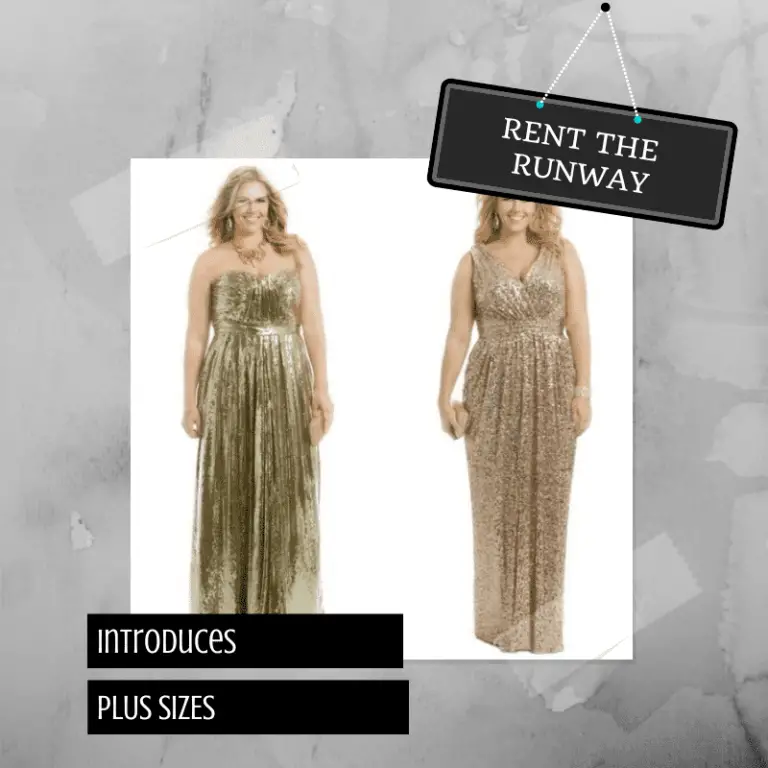
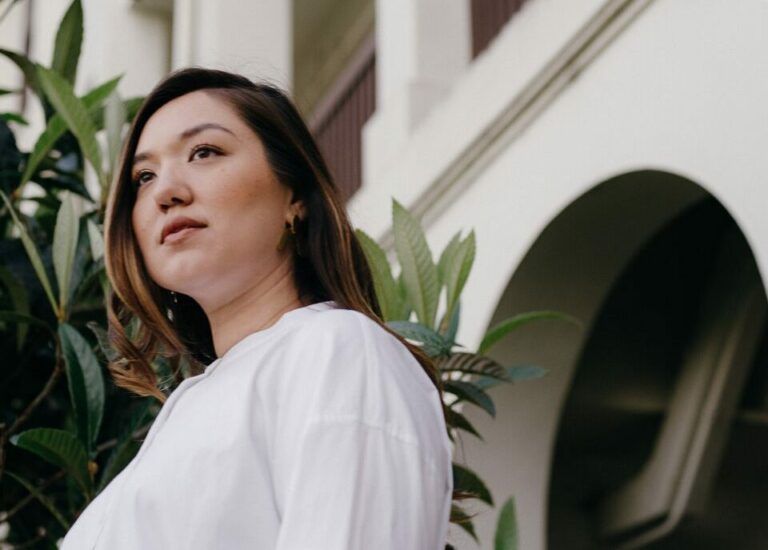
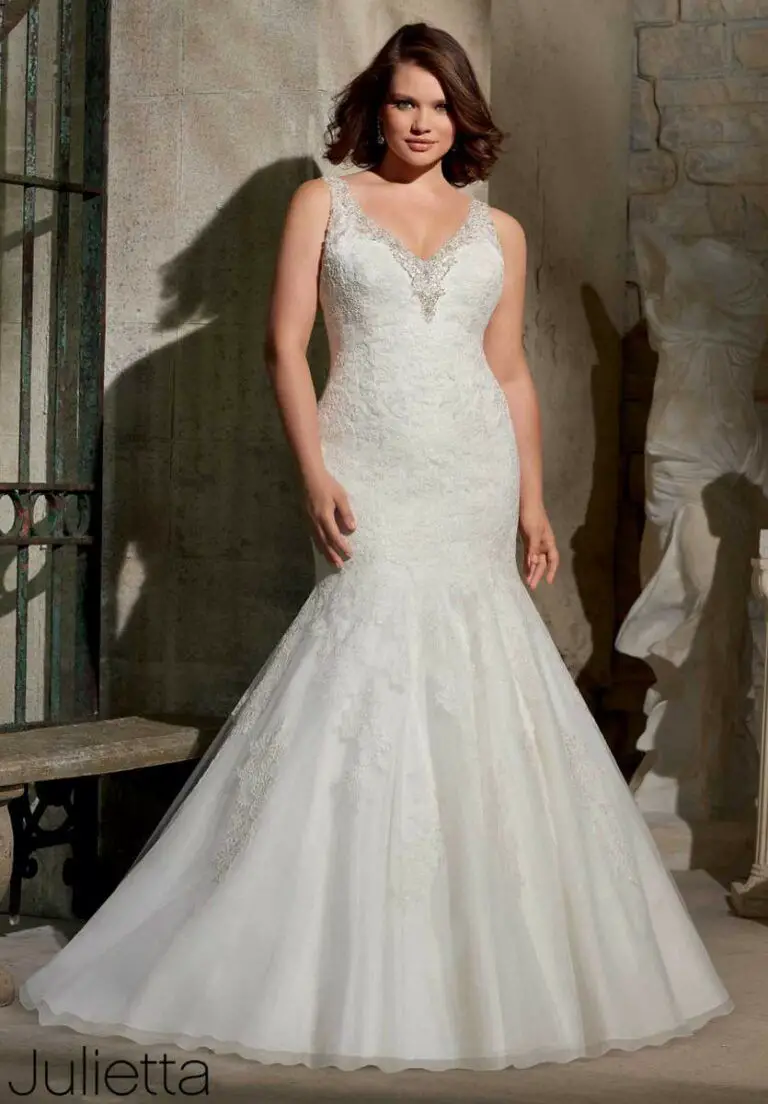
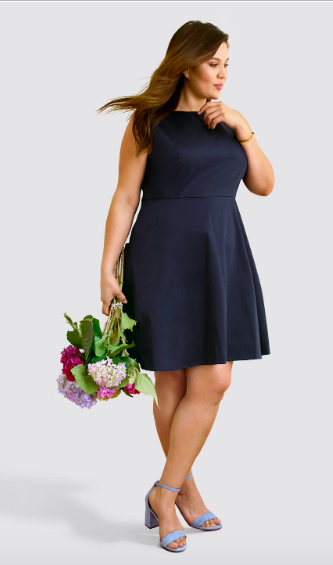
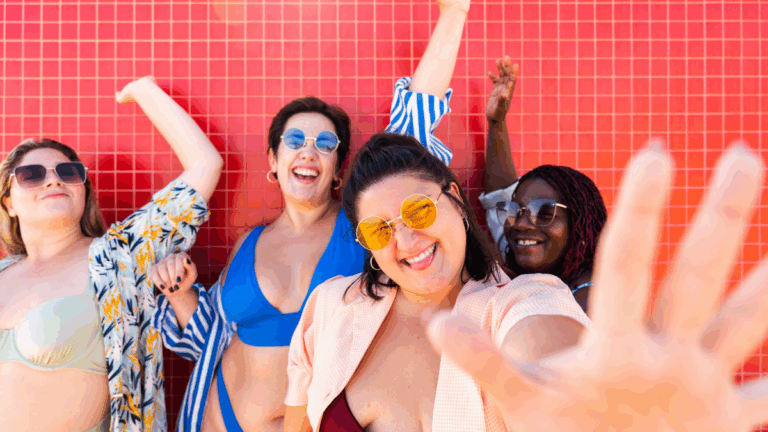
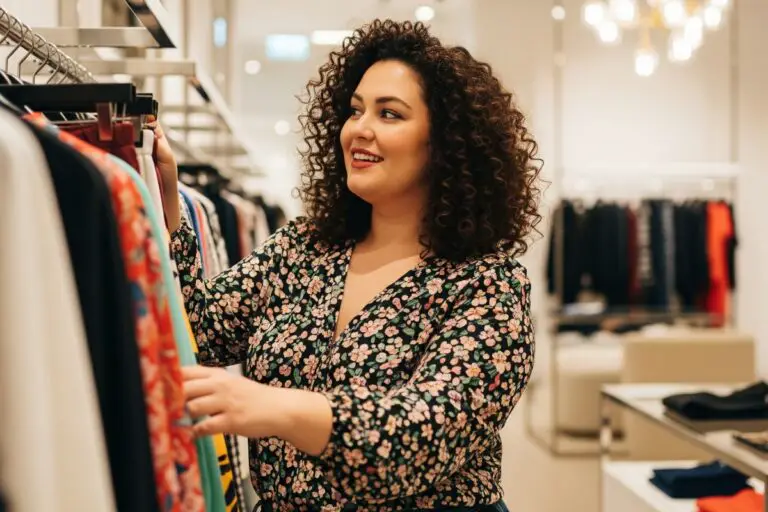
It would be super awesome if the fashion industry would have short, fat models. I’m only 5’5″ and where anywhere from an 18 to a 22, depending on brand. 99% of so-called plus size models are 6000 feet tall and maybe a size 10. My only splice is that if the garment looks terrible on a tall model, I know it will look horrendous on me.
It would also be nice if we weren’t relegated to garish prints, boxy shapes and polyester everything.
THANK YOU for writing about this. I have felt so alone in my disappointment of extended sizes for years now. Makes me not want to shop or try on items at all. In my teen years I NEVER went to try on clothes, then I found things I liked and started to try things. But more and more styles are limited in store to my size. Additionelle who first ignited my try on experience don’t hold 26 in store and rarely a size 4x. Much like Torrid and other lines. I don’t mind if companies want to charge more for the extra material as I appreciate that’s probably one issue. But give us the option! Simple as that. Really grateful you have raised this, thanks again!
Yes, a million times yes. Thanks for writing this. Where do I begin? You got me thinking about so many intersections. So I’m just gonna share all random style ?.
I’m an American living in Canada. I’m currently a 14/16; edging back down to a 14/12 (postpartum). Up until about eight years ago, I was a 26/28 and lived in the plus world. It was a strange trip going down the scales and finding more clothing options available and at each new, smaller size, I also saw life opportunities up too. At my smallest weight I was an athletic size 10. I received 3 promotions in 2 years and was told, repeatedly, I looked the part. I mention this only to say that had I not lost weight and “infiltrated” the thinner world, I would have thought I was being paranoid about how differently you’re treated and how many more options there are available to you.
It was a profound experience that validated my lived experience and the experiences of all my fat friends and it pushed me even further into my three great loves: fat, feminism and fashion ?.
From sizes 18- 28, my hour glass figure wasn’t that visible – worsened by the fact Canadian plus size clothing is a million times worse than the US. Starting from a size 16 downwards, my hour glass figure emerged and for a while that was strange, too. Shopping got a lot easier and unlike before, the clothing made more sense. Seams and darts lined up. Whereas when I was larger, the proportions etc were way off. Even t shirts didn’t hang right and really, why shouldn’t a tshirt hang beautifully on every body?
From a 14 downwards it got even easier. I went from owning 1-2 pairs of jeans to owning 5, because why not? I had more than one jacket because straight sizes are cheaper, so why not? The options felt endless and it often made me think about the classism and elitism of clothing and how limited our options for plus are and how that perpetuates the cycle.
Flash forward to now. I’m 40 and two years postpartum, I’m about 7 lbs away from my pre baby weight. Heading into the smaller end of 12/14 and out of the higher end of 14. And even that is a head trip. The 14/16 is ‘ok fat but also dangerously heading into fat fat’, where as 12/14 is ‘acceptably chubby but not ok’. I mention all this because on top of being heavier, my body composition also changed (I now have a belly and wider hips and thighs, so my waist isn’t as prominent) so the luck of being hour glass plus is gone and the clothes just didn’t hang right. Although I could fit into some straight sizes, plus was more comfortable when I was a bit bigger. And Aside from the clothing aspect, it was interesting to be placed in a new (but familiar) social category and see how the clothing options correlated to that. Sometimes I feel like a social scientist spying on the world and observing the fluctuation of how we’re percieved based on weight……
Prior to needing plus sizes again, I’d stopped looking at plus fashion. (It was also a time where I wasn’t interested in any fashion really). So coming back in after about 8 years out has been awesome. The options are gorgeous and better designed for curvy bodies, but still $$$ in my opinion. I won’t order from Eloquii for example, because with the exchange, shipping and duty, we’re paying about 3x as much and because they’re online and using tall, young, “plus ish” models I can’t tell how it’ll look on me and I don’t want to place a $500 order and spend another $200 returning the no’s – so a big improvement but Canada isn’t exactly Mars so why can’t we figure this out already?
Having said that though, finding brands like Universal Standard, has been a-fucking-mazing. And ive decided I will invest in their clothing because they’re investing in me as a consumer. That’s not me throwing shade on Eloquii – more just to say I am so impressed by how committed they are. Their policy on exchanges due to size change is brilliant – it takes the pressure off about investing in yourself and your image (cuz let’s face it, we live in a world where optics matter and beautiful clothing is also a wonderful way to express yourself) and what really seals it for me is how they show the clothing on different sized bodies! Brilliant. And I’ll continue buying their stuff as I get into the smaller side of plus because I think it’s important to put my $ where my mouth is and I need those black overalls I keep seeing on Instagram.
A super rando and rambling comment inspired by a great post. Fingers x’d plus retailers see your post and figure out that our bodies vary and as you get into the higher sizes the proportions change, making it a bit more complicated but we’re a powerful bunch of consumers and we will put our $ into companies that make easy for us to buy and make us look amazing – so why miss out on the opportunity?
So true.
As a merchandiser for a plus size store I find it incredibly hard to find brands that go beyond a 3X.
Even the 3X’s I’m able to find are around a size 16 +1/-1.
I’ve tried to take things into my own hands and made some leggings to a true 5X (30-32) but with no experience designing for plus sizes and my patternmakers also clueless, I made a huge mistake by keeping the ankles the same proportions for all the sizes. For the 4X and 5X, the ankle openings are way too wide for my leggings.
We need more education. More publicity.
Unless you’re a big company that houses internal designers, patternmakers, and sales peoples it’s incredibly difficult to implement change because all the information is being sectioned off.
And it sucks because until we clear up these mistakes, plus size consumers are going to be hesitant about making purchases. Which means manufacturers/brands will see the market doesn’t want to spend money and won’t invest in it.
It’s a vicious cycle, but I hope there will soon be a breakthrough.
It’s small battles. We just have to keep trucking on even though we’re edging the breaking point.
p.s. if anyone knows any good plus size designers with good fit that needs some exposure, please let me know!!!!
CURVYKINI has great fit & they’re a startup brand that could use some exposure.
I buy 4x & 5X clothing at Catherine’s in Northern New Jersey. They have draping polyester tops and draping jackets that look nice with business quality stretch pants. I wore these to work all the time, before I got laid off for “old fat ugly woman” discrimination. Plus size designers mess-up when they make the jacket’s length above the hip/ above the butt. No heavy woman wants to show off her fat butt in the working world, where fat is discriminated against. Our legs are usually thinner than our butts. So we want our jackets long and flowy enough to cover our butts. Then we want more fitted pants, giving the business world the illusion that we are actually thinner under all that flowing jacket fabric.
Ask Catherines where they get their longer polyester jackets from and where they get their business quality stretch pants with elastic waistbands from.
Pants with stiff fabrics and zipper fronts don’t stay up. The waist is bigger than the lower stomach area. So business pants made with stiff fabrics always fall down, under our bellies, leaving a big saggy bunched up pouch of fabric below our bellies. Can you imagine how HORRIBLE that would look with a short business jacket? Honestly. Designers need to talk to actual heavy women to get a clue.
First, Thank you for taking this subject on and writing this. Having worked a lifetime in the apparel industry in Design & Development in RTW and Outdoor and also as an adjunct professor, I studied this very issue because it frustrated me. Some stark realities emerged (some of which you called out in your article (thank you very much!).
1. We’ve known for years that the national average size is a 16/18 (check out the Center’s for Disease Control website – free info available to everyone). If that’s the case and you’re a company that is seeing sales stagnate or decline, why wouldn’t you “grow” with your consumer? Isn’t your job to be a service for consumers?
2. The reason I believe many companies haven’t moved into larger sizes is it’s “The Great Unknown”. Most buyers and merchants purchase based on a selling history. If they don’t have a history, they don’t venture in deeply. Understood, but that’s why you test. Large retailers have the cash to take this leap. They would have realized quickly that they need to market to that consumer (since they wouldn’t know if a size scale shifted or new offerings were available). I see this is changing, but still frightening for many companies.
3. There is an assumption that the Athena or Plus Size consumer doesn’t spend money on clothes and related to my business, Rsport, that they don’t exercise (don’t make my blood boil). How this misnomer started, I have no idea, but it is just that. Studies have shown that the Athena/Plus Size consumer actually spends more per purchase than her straight sized counterpart. I’m guessing this is because she buys when she finds because its been such a challenge historically for her to find great apparel.
4. Fitting of garments is more challenging in the Athena/Plus Size range, but it’s not impossible. And as in all brands, some fits will be better suited for certain body types while other brands suit others. Its the same in straight size (Think Ralph Lauren – he admitted to making his clothes on women with no busts…exactly the reason no busty woman could button his shirts without having gapping). So as long as we share how we come to our fit and why we build the way we do, consumers are as educated as they can be to make best choices for themselves.
5. There are constraints that some machines in factories aren’t set up to do (print on large patterns). The printing beds aren’t large enough. This just means designers are working to alter their builds to create well fitting product within the current limitations of factory abilities.
All in all, I believe we are seeing the shift. Those not on board, will soon learn that it’s not a fad or a passing fancy, but the trajectory we are moving in. I was asked by a potential investor if I was worried by creating an athletic apparel brand only for Athena and Plus Size Athletes and not running my size scale down to a size 2 that I’d be leaving opportunity on the table. I told him “There are a great many brands who build beautiful product for straight sizes. I don’t need to be another. By focusing on the plus size athlete, we make sure we never lose focus of HER needs, HER challenges and build product specifically for HER”. I don’t regret that decision and know I never will.
“A lot of designers just don’t know how to design for plus-size bodies, because they aren’t taught how to do so.”
Even when they do make clothes in 24 or higher, they do not take into account a womans body. They apparently do not understand that a woman in a size 24 has larger arms. I have seen clothes for my wife, size 24-26 with arm holes that I can barely get my arms into, and I am Mens size large. Everything else fits well, but the arms are far too small.
They also assume that if you are size 24+, that your breasts are ginormous. So, most of the dresses and nightgowns, have arm holes too small, and tops that are far too big.
I agree with Kevin. Arms are often insufficient for the dress size. But other comments are revealing. Designers have to take into account a much greater diversity of figure types when doing extended sizes. The burgeoning research in 3D data for all figure types suggests that one solution to all this may lie in custom computer-cut fashions for all.
I agree with Kevin. Arms are often insufficient for the dress size. But other comments are revealing. Designers have to take into account a much greater diversity of figure types when doing extended sizes. The burgeoning research in 3D data for all figure types suggests that one solution to all this may lie in custom computer-cut fashions for all.
You know, in the 1990’s 26/28…that was actually 3xl as a size. Somewhere around 2005 it became 4xl…then a few years latter that became 5xl…its still 26/28 but stores can say they now have sizes to 5xl to look inclusive. I know I’m late to this blog but… Its annoying to have 26/28 be..5xl. The great resizing I used to call it. i don’t know haven’t bought clothes in years as…there isn’t anything to buy, really, even if you look at onestopplus. Lane Bryant always stopped at size 24 in their stores, though in their catalog heyday of the 1980’s and 1990’s they were done at size 40. Romans in the catalog heyday went to size 44, so they claim I don’t think I’ve actually seen anything but nightgowns or loungers as that high a number.